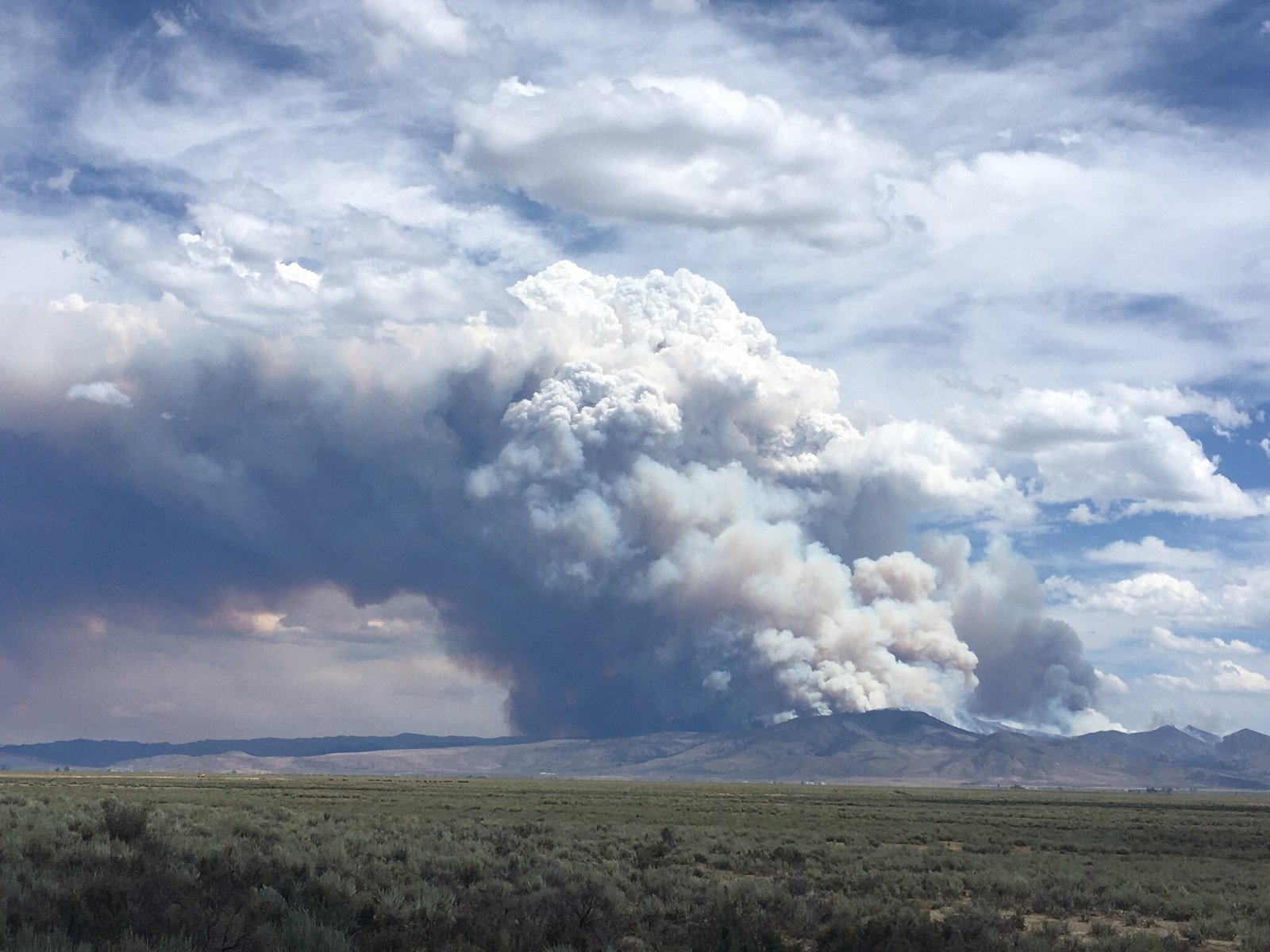
Wildfires release vast amounts of visible pollutants into the atmosphere that darken skies and push people indoors to avoid unhealthy air. But a near-invisible threat to public health associated with wildfires is ozone, the reactive oxygen molecule O3 that harms the lungs and other sensitive tissues in the human body.
New research led by the University of Utah documents how smoke from the West’s wildfires substantially increases ozone concentrations, often above federal health standards, even in remote places with few human emission sources of ozone’s precursor pollutants, such as nitric oxides, or NOx.
“The question I wanted to ask was, if we don’t have urban emissions, let’s say that we zero out all emissions, will we still have an ozone problem?” said lead author Derek Mallia, a research assistant professor of atmospheric sciences. “This study suggests that we could remove all of the regional emissions from anthropogenic sources of NOx, but fires can still produce a large amount of ozone.”
Published last month in the journal Atmospheric Environment, this research highlights the double dose of air pollution in areas downwind from the flames, with high levels of both fine particulate matter and ozone. It is estimated that smoke exposure results in 6,300 deaths a year in the United States.
Complicating this picture is the fact that ozone is not released directly into the air; rather it forms in the atmosphere when oxygen atoms from other pollutants recombine in a photochemical process involving sunlight.

The main drivers are NOx and volatile organic compounds, or VOCs; the latter is a major component of wildfire smoke. NOx, on the other hand, is more associated with anthropogenic emission sources, such as vehicle tailpipes and industrial smokestacks.
Ozone levels are very difficult to model because the pollutant is controlled by so many factors, including wind speed and direction, temperature, cloud cover and time of day.
To better understand the complicated relationship between smoke and ozone, Mallia’s team applied coupled computer models, known as WRF-Sfire and WRF-Chem, to a record-setting smoke event in 2020 that affected much of the Western United States. The period of Aug. 15-26 was among the West’s worst fire episodes in the modern era. California’s August Complex fire burned more than 1 million acres across seven northern counties, causing $12 billion in damage. Dozens of fires raged elsewhere, such as Utah’s 90,000-acre East Fork fire and Oregon’s Lionshead and Beachie Creek fires that burned a combined 400,000 acres.
The research concluded that, on average, the presence of wildfire smoke increases ozone concentrations by 21 parts per billion (ppm). “Ozone was roughly 20 to 30% higher because of wildfire smoke,” Mallia said. “That’s pretty big.”

Since background ozone levels in the West are already elevated, this added load potentially pushes levels beyond the 70-ppb health standard set by the U.S. Environmental Protection Agency.
To complicate things further, the research found that the shading from the smoke itself alters the weather and slows ozone formation, reducing levels by up to 10 ppb within the plume.
“You also have a lot of particulate matter, which is a pollutant, too, but it can block sunlight and therefore that will reduce the amount of sunlight available for ozone photochemistry. It can be substantial in some cases,” Mallia said. “If you’re right over the fire, there’s usually enough smoke shading where it limits the amount of ozone. But if you get far enough away and the plume becomes relatively diffuse, it’s usually not thick enough to really limit ozone.”
The study’s key takeaway is that existing models should be improved as wildfires become more frequent and severe as climate warms. Tools such as the WRF-Sfire and WRF-Chem models will be essential for predicting air quality and protecting public health during wildfire season—but these tools need ongoing refinement to handle complex smoke dynamics.
More information:
Derek V. Mallia et al, Simulating the impacts of regional wildfire smoke on ozone using a coupled fire-atmosphere-chemistry model, Atmospheric Environment (2025). DOI: 10.1016/j.atmosenv.2025.121404
Provided by
University of Utah
Citation:
Wildfire smoke significantly raises ozone pollution, even in remote regions (2025, August 9)
retrieved 9 August 2025
from https://phys.org/news/2025-08-wildfire-significantly-ozone-pollution-remote.html
This document is subject to copyright. Apart from any fair dealing for the purpose of private study or research, no
part may be reproduced without the written permission. The content is provided for information purposes only.




